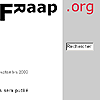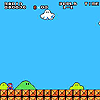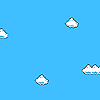 Lavoro
Digitale
Lavoro
Digitale
I'11 ottobre è partito Digital work presso il V2_, Istituto di arte - media e tecnologia con sede a Rotterdam, autore dell' Dutch electronic art festival (quest'anno Data Knitting), stavolta in collaborazione con il Piet Zwat Instituut, Willem de Kooning Academie. Questa la questione: I new media hanno alterato il rapporto con il lavoro, come e quanto questa rivoluzione ha trasformato la vita contemporanea. E quanto questo diventato glamour o no, ovvero parlare di contaminazione con nuove tecnologie ?
[...] read more
:: Francesca De Nicolò
 La
situation
et
les
problèmes
des
artistes
plasticiens
français
était
le
thème
d'une
conférence
qui
s'est
tenue
à
La
situation
et
les
problèmes
des
artistes
plasticiens
français
était
le
thème
d'une
conférence
qui
s'est
tenue
à
[...] read more
---------------
In mid-September, a conference took place in
[...] read more
::Isabel Saij::
 With
lectures
by
Esther
Polak
and
Saul
Albert
and
the
world
premiere
of
Alexei
Shulgin's
latest
work
WIMP,
yesterday's
start
of
dorkbotrotterdam
was
more
than
interesting.
But
before
I
start
with
the
review
of
the
presentations,
let
me
explain
the
definition
and
concept
behind
dorkbot.
While
the
central
dorkbot
(dorkbot.org)
site
just
talks
of
"people
doing
strange
things
with
electricity,"
the
word
"
dorkbot"
is
put
together
out
of
the
words
"dork,"
which
is
slang
for
sort
of
clumsy
but
brilliant
nerd,
and
"bot,"
which
refers
to
robot;
combine
these
two
words
and
you
have
something
like
a
brilliant
automated
human
or
maybe
a
brilliant
human
automated.
The
concept
of
dorkbot
is
somehow
related
to
the
above
interpretation
of
the
word.
In
the
most
literal
sense
of
the
word,
dorkbots
(this
is
how
dorkbot
meetings
are
called)
are
gatherings
of
nerds
that
present
geeky
electronic
of
related
projects.
But,
of
course,
this
has
to
be
seen
in
the
widest
sense,
so
on
dorkbots,
you
can
find
software
engineers
that
develop
useless
but
funny
programs
to
artists
that
make
robots
dream.
The
fact
that
most
people
who
do
presentations
and
visit
the
meetings
know
exactly
what's
goin
on
shows
that
dorkbots
is
not
at
all
nonsensical.
To
name
but
a
few,
Adrian
Ward,
Kate
Rich
and
Bureau
of
Inverse
Technology
are
"famous"
dorkbotters.
With
lectures
by
Esther
Polak
and
Saul
Albert
and
the
world
premiere
of
Alexei
Shulgin's
latest
work
WIMP,
yesterday's
start
of
dorkbotrotterdam
was
more
than
interesting.
But
before
I
start
with
the
review
of
the
presentations,
let
me
explain
the
definition
and
concept
behind
dorkbot.
While
the
central
dorkbot
(dorkbot.org)
site
just
talks
of
"people
doing
strange
things
with
electricity,"
the
word
"
dorkbot"
is
put
together
out
of
the
words
"dork,"
which
is
slang
for
sort
of
clumsy
but
brilliant
nerd,
and
"bot,"
which
refers
to
robot;
combine
these
two
words
and
you
have
something
like
a
brilliant
automated
human
or
maybe
a
brilliant
human
automated.
The
concept
of
dorkbot
is
somehow
related
to
the
above
interpretation
of
the
word.
In
the
most
literal
sense
of
the
word,
dorkbots
(this
is
how
dorkbot
meetings
are
called)
are
gatherings
of
nerds
that
present
geeky
electronic
of
related
projects.
But,
of
course,
this
has
to
be
seen
in
the
widest
sense,
so
on
dorkbots,
you
can
find
software
engineers
that
develop
useless
but
funny
programs
to
artists
that
make
robots
dream.
The
fact
that
most
people
who
do
presentations
and
visit
the
meetings
know
exactly
what's
goin
on
shows
that
dorkbots
is
not
at
all
nonsensical.
To
name
but
a
few,
Adrian
Ward,
Kate
Rich
and
Bureau
of
Inverse
Technology
are
"famous"
dorkbotters.Like the concept of "exploding cinema," everybody with a space can start dorkbots, and since people and every location in the world has their own habits, dorkbot meetings differ per location. But what all dorkbots seem to have in common is the relaxed and informal atmosphere.
Okay, now to Dorkbot Rotterdam that was held in the space of Uberground, a large luxury private apartment in the heart of
The afternoon began with Esther Polak who did some very detailed presentations of some of her projects, which all had to do with a sort of social mediated experience. One of her projects," Amsterdam Realtime," can be best described as a sort of psychogeographic project with high tech means (GPS devices) in which some inhabitants of Amsterdam were given GPS devices, which in turn were used to draw a new map of Amsterdam in real time. But whereas the inventors of psychogeography (the situationists) used it to understand and get more control of their personal everyday life, Polak uses the movement and the traces of several participants to draw a map that results in an aesthetic product.
After this, Saul Albert (one of the co-organizers of dorkbotlondon) took over. He explained in a rapid tempo what dorkbotlondon does and speedily led all visitors through a load of projects that in most cases had to do with the living situation of people housed in the flat where he lives or with the space dorkbotlondon is housed. Projects presented ranged from setting up a very local TV network using the old cable network in his flat to dodecalectic badminton, a game that was developed in one of the spaces of the dorkbotlondon building and is, in fact, a badminton game for 7 players.
The last--but not the least interesting--was the presentation of Alexei Shulgin who did tell an in-depth story of his DX386 concept. He explained about his preference to make a computer something more than the dead thing it is used as nowadays, pointing to the utopian/dystopian ideas people had about them in the past. As an example of this, he came up with the use of a computer that penetrates everyday life; he talked about a project he did in the streets of
After that project, we saw the world premiere of his latest work, which he did in collaboration with Victor Laskin, called WIMP, a sort of VJ tool that enables its user to put VJ effects on the standard elements of the Windows GUI, like, for example, shake or three-dimensionally rotate windows. As in all works of Shulgin, this work also has a certain amount of irony; using just the standard windows elements makes it a sort commercial Bill Gates would be proud of but the name WIMP (slang for dumbo) was probably methodically chosen. A free beta version of WIMP can still be downloaded at http://www.wimp.ru.
:: Peter Luining ::

Mario Battle No.1, created by Myfanwy Ashmore in 2000, presents a game environment stripped of all enemies and obstacles; all the player can do now is take a stroll across the landscape. And Super Mario Clouds by Cory Arcangel consists of nothing but the iconic clouds found in the Mario game.
 Both
of
these
pieces
touch
on
the
particular
idea
of
leisure
that
is
prevalent
in
game
playing,
which
is
actually
disguised
with competition*
(in
this
case
either
against
the
machine
or
another
player).
Both
artists
reevaluate
having
time
to
play
games
by
taking
away
the competition
aspect
that
is
usually
expected
from
the
viewer
while
demanding
to
have
a
disinterested
experience
with
the
objects.
The
principles
behind
these
pieces
are
based
on
a
by-now
conventionalized
postmodern
tension
of
the
object
of
art
as
a
subject
of
contemplation
vs.
an
ideological
battle
ground
for
power.
These
extreme
dialogues
are
what
make
art
practice
interesting.
We
find
this
tension
nicely
exposed
in
both
pieces
not
by
adding,
but
rather
subtracting
from
a
naturalized
functioning
state.
Purposiveness
without
a
purpose
is
what
these
pieces
present,
and
their
power
relies
on
the
inability
to
offer
nothing
but
loss
of
time
as
the
ultimate
privileged
state
of
production.
Both
of
these
pieces
touch
on
the
particular
idea
of
leisure
that
is
prevalent
in
game
playing,
which
is
actually
disguised
with competition*
(in
this
case
either
against
the
machine
or
another
player).
Both
artists
reevaluate
having
time
to
play
games
by
taking
away
the competition
aspect
that
is
usually
expected
from
the
viewer
while
demanding
to
have
a
disinterested
experience
with
the
objects.
The
principles
behind
these
pieces
are
based
on
a
by-now
conventionalized
postmodern
tension
of
the
object
of
art
as
a
subject
of
contemplation
vs.
an
ideological
battle
ground
for
power.
These
extreme
dialogues
are
what
make
art
practice
interesting.
We
find
this
tension
nicely
exposed
in
both
pieces
not
by
adding,
but
rather
subtracting
from
a
naturalized
functioning
state.
Purposiveness
without
a
purpose
is
what
these
pieces
present,
and
their
power
relies
on
the
inability
to
offer
nothing
but
loss
of
time
as
the
ultimate
privileged
state
of
production.*Originally the term labor was used, but competition is a better term because the game enthusiasts usually play video games for fun.
:: Eduardo Navas ::